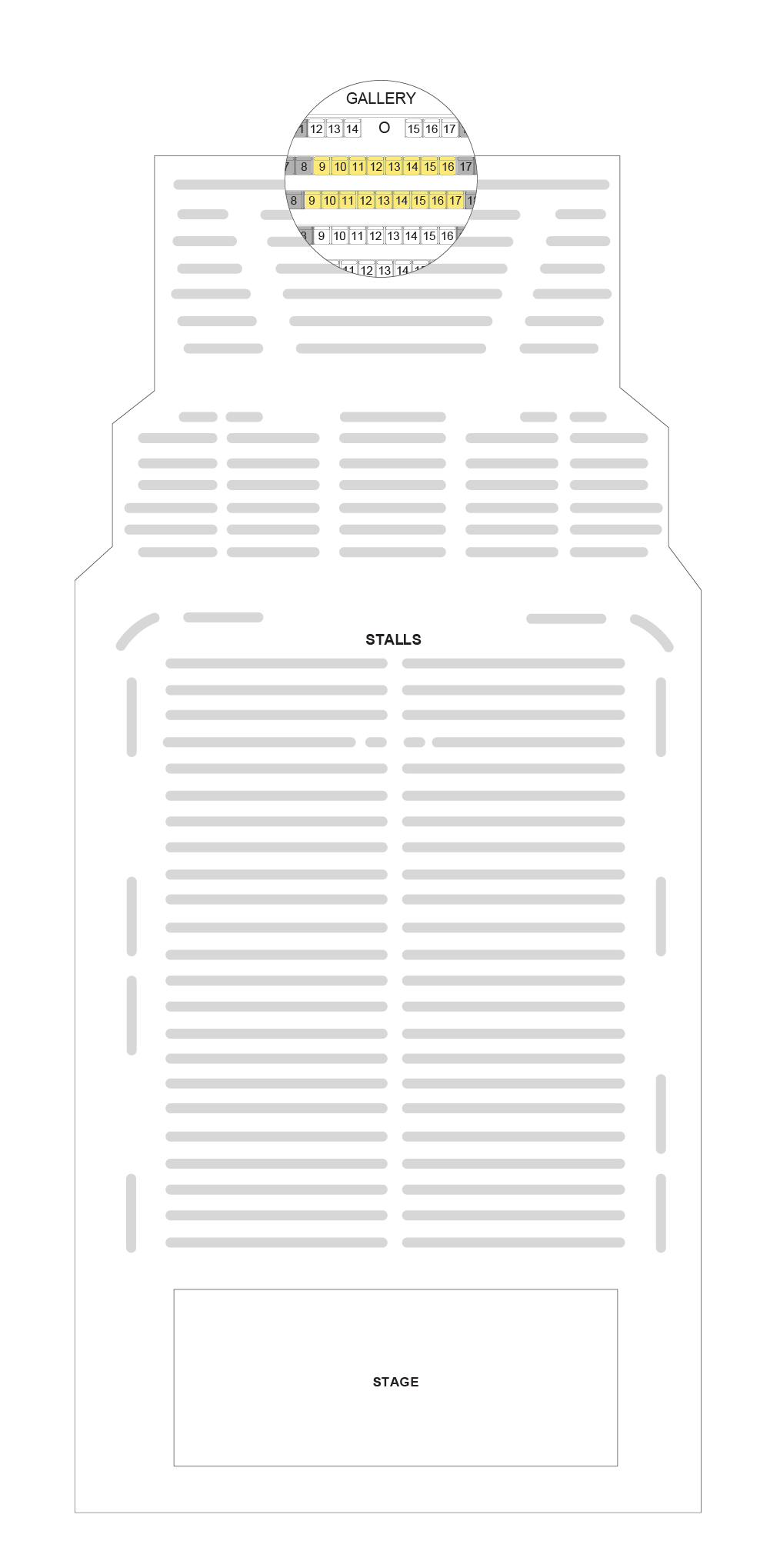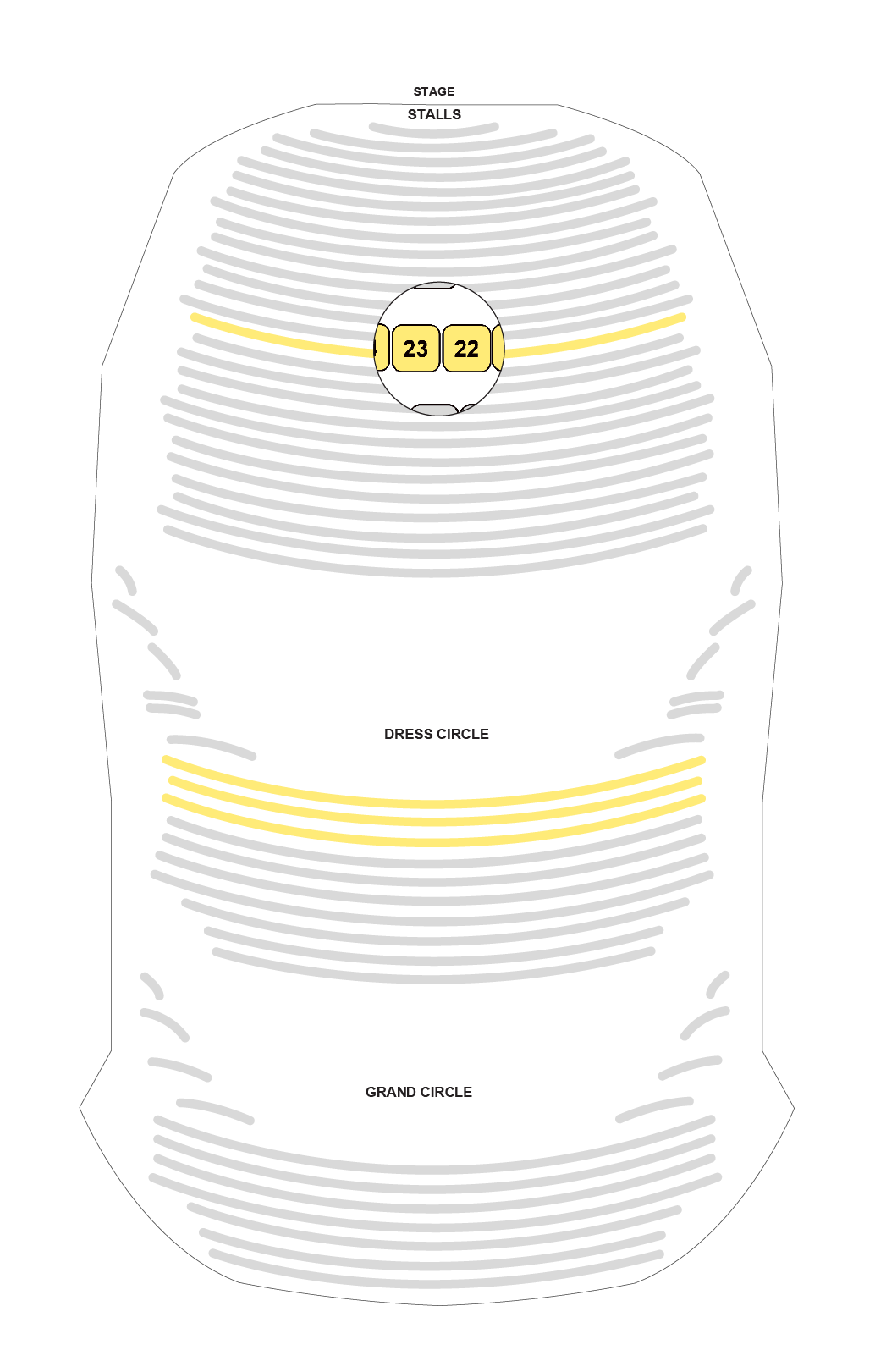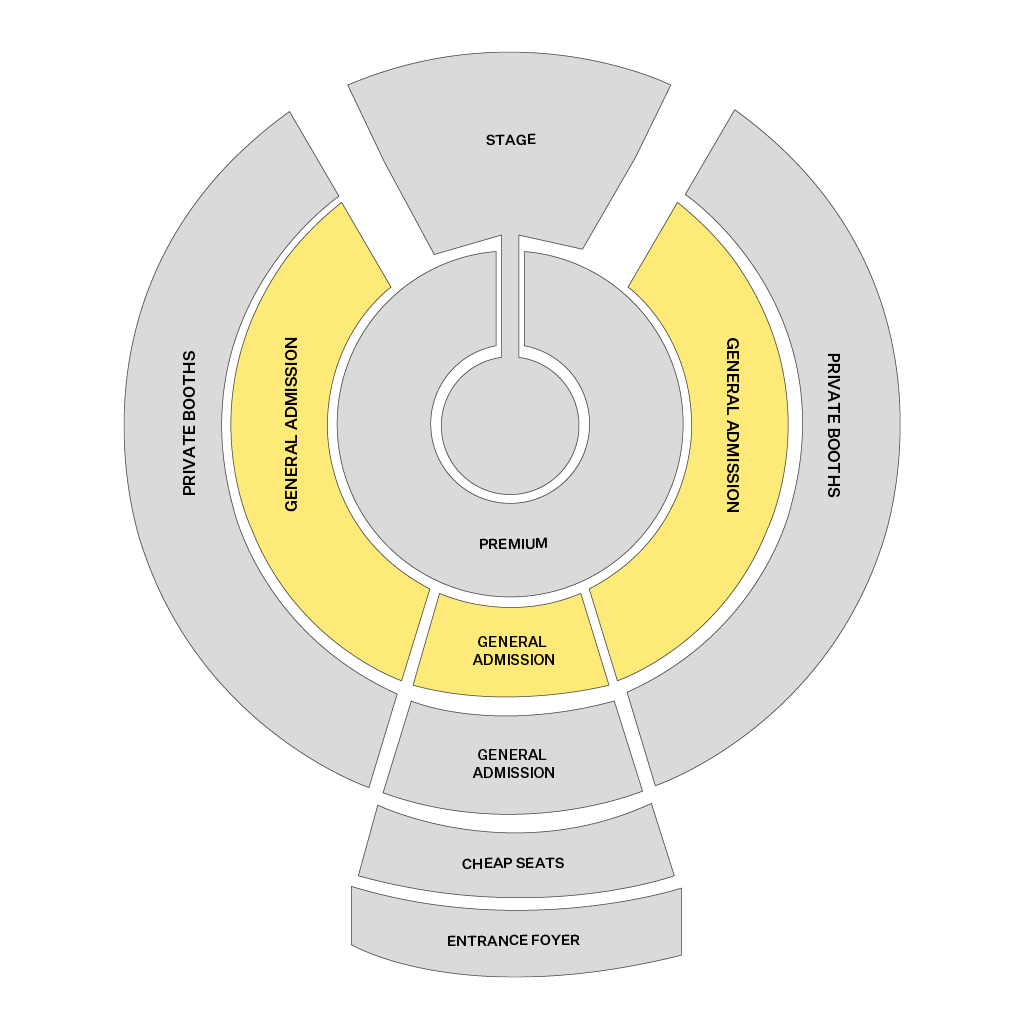We're lifting the veil on where to perch throughout the festival season, with critical insights from those who ought to know.
Best seats in the house
Adelaide Town Hall’s Auditorium
- Capacity: 1110
- Best seat in the house: M15 or M16 in the Gallery.
- Cost: Price isn’t determined by location.

“The Adelaide Town Hall is our city’s primary venue for orchestral concerts. Its classic ‘shoebox’ shape (a hallmark of many of the world’s great concert halls) gives it a beautiful acoustic and intimate connection to audiences that international conductors and soloists remark upon again and again,” says Adelaide Festival artistic co-director Rachel Healy.
“While a seat in the dress circle is always a delight, affording a great view of the whole orchestra, the sound is actually superb when you sit further back and a bit off-centre in the gallery. The best seats in the house vary, but we should say seats 14 and 15 in row M of the gallery.
“If there is a piano soloist it is nice to sit on the keyboard side – even if you’re quite far away from the stage in the gallery. This of course does not apply if it is a different soloist. These seats are great for sound but if you want to have a better view you should sit closer.
“But at any odd day, you might sit behind a very tall person or someone who is unwrapping cough lollies every two minutes, then seat M16 won’t help you either!”
Adelaide Festival Centre’s Festival Theatre
- Capacity: 2000
- Best seat in the house: J22 or J23 in the Stalls.
- Cost: $139 – $289.

“The Festival Theatre is the largest arts theatre in Adelaide and the venue for many Adelaide Festival centrepiece events,” says Adelaide Festival co-director Rachel Healy.
“With seat selection options for almost 2000 people, audiences are spoiled for choice. Sitting in Row J in the stalls will almost always give you the best overall experience: sound quality and balance, distance to the performers on stage, no neck strains or partial views. That’s why the house seats are in this row! Even if J Row is unavailable it is always great to nab a seat in the middle of the stalls or in the first few rows of the dress circle.
“That said, an amazing show should be as thrilling to watch in the back row of the theatre as it is in the best seat in the house. I’ve sat in so-called terrible seats and had transformative theatre experiences. And conversely, a great seat can’t save a bad show!”
“I’d watch Breaking the Waves in the Festival Theatre. There are still a few good seats in rows J and K in the stalls, but row J will give you the best overall experience and it is always great to nab a seat in the middle of the stalls.”
Magic Mirror Spiegeltent
- Capacity: 600
- Size: 572sqm
- Best seat in the house: Middle second tier.
- Cost: price isn’t determined by location.

“The best seat in the house? Let’s go with the Magic Mirror Spiegeltent because it’s one of our new tents this year and it’s the biggest tent we’ve got. We’ve got some great shows in there and it’s new and shiny too,” says Gluttony co-director Elena Kirschbaum.
“The great thing about Spiegeltent’s is that there’s no bad seat to start with, but I think because of the way that things are usually laid out in a tent like this, you’re so close to the action no matter where you are, even if you’re in the back. Obviously, the front couple of rows are great, because you’re so close to the action – you can literally feel the sweat of the performers; you’re up close and it’s such an intimate way to experience something like circus.
“But I think one of the best seats in the house, which I think is perhaps a little underrated, is usually a few seats back from that. It’s the first seat in the second tier. Even though Speigeltent’s aren’t raked as such, they do tend to have small licks where it lifts up by about 20 centimetres or so. Sometimes that’s a really great place to see it because it’s sort of like at the cinema and you don’t want to sit too close to the screen because it’s almost a bit too much to take in.
“I may be a little bit biased, but I’m involved with Rouge and this is the third year we’re bringing Rouge back to Adelaide. That’s what I would see from this seat.”
Fortuna Spiegeltent
- Capacity: 640
- Size: 530sqm
- Best seat in the house: Middle general admission.
- Unallocated seating: price isn’t determined by location.

“If I could say what they say in the circus ‘every seat’s a good seat if you’re inside watching this show.’ I’d say every seat but if I had to actually choose in the Spiegeltent, I myself would say I know people love the booths, and to have a very special booth experience, but I wouldn’t necessarily go to the booth,” says Garden of Unearthly Delights creative director Scott Maidment.
“I’d go for halfway through the centre, up on the first rise where the outside of the outer circle of the tent sits. You’re then kind of front and centre and raised a little bit over the heads of everybody else… or the front row — you can’t beat it. In the Speigeltent you end up with probably the performers sitting on your lap or getting wet or getting covered in confetti and you really are part of the action.
“One of the great things about the Spiegeltent is because it’s not in straight rows, it’s seated in the round. It just means there’s more special seats in the Spiegeltent than there are in any other venue.
“I would always pay a little bit more to get really that premium experience, because the Adelaide Fringe only happens once a year. They say you can only buy a ticket once but you have the memories for the rest of your life, which is true.
“In the Spiegeltent, you can choose your own seat because the seats aren’t allocated. That’s a great experience and if you line up early and get in there you can choose your own adventure.”
Deaf and disabled patrons
For Deaf or disabled audiences, the “best seat in the house” can vary depending on each person’s individual access requirements,” explains a spokesperson from disability and arts advocacy group Access2Arts.
“Often the question is less about where to sit (though that can be important too), but what access is available to support people’s inclusion.
“For venues, this is not just about making sure they are physically accessible (having clear and open pathways for travel, flat entrances without steps or lips, and are well-lit and obstacle-free) but how they communicate the access they offer.
“For venue staff and volunteers, providing the ‘best seat’ starts with asking an audience member what will best support them to experience the show.
“Having a conversation to find out what an audience member needs to enjoy the show, and being able to support that, is the first ‘best’ thing you can do.”




